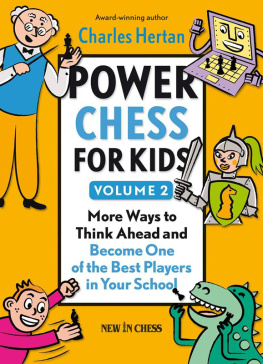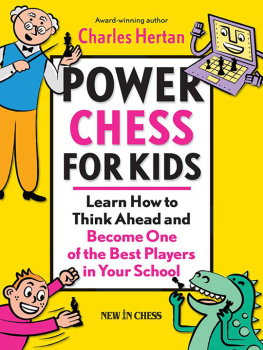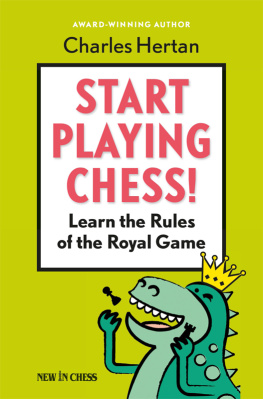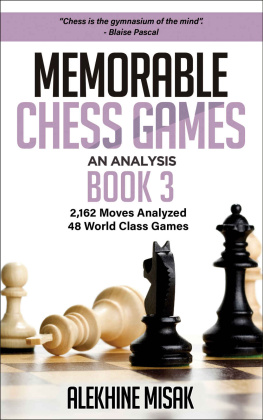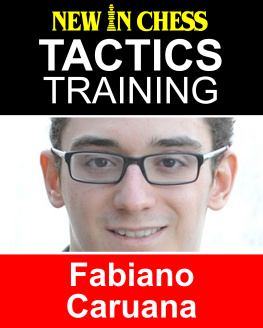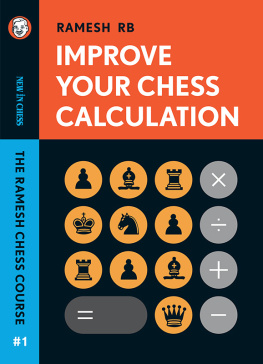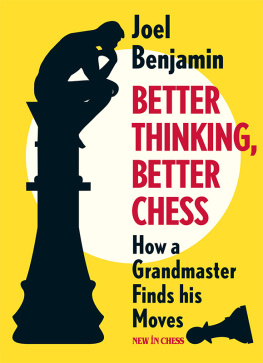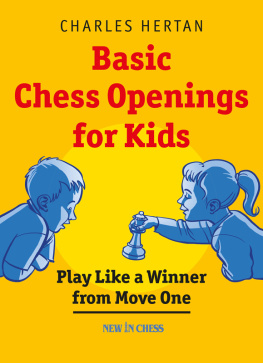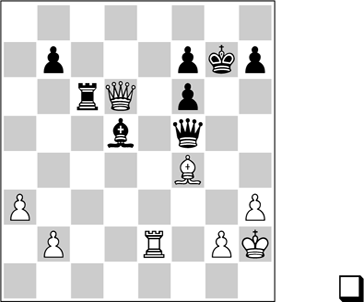Afterthought
Fifteen years ago, I noticed that all of my students, from beginners up to 2100 rated players, had a critical flaw in their calculation process. Most of them had already mastered the information taught in standard tactics books about pins, forks, skewers and other tactical devices, yet they continued to miss critical forcing moves in nearly every one of their games!
Over a series of lessons, I tried to program into their brains a new approach to analyzing positions, beginning with the question: OK, what are the most forcing options in this position? Pretty quickly, I began to see encouraging results; a 1400 player would suddenly find a crisp 2-3 move forcing sequence and defeat a much stronger player.
I decided then on the concept of writing a different kind of tactics book, which focused on the MENTAL PROCESS involved in correct analysis. A few others had written important books on this subject, such as Kotovs classic Think Like a Grandmaster; but that book was in many respects too advanced for my students. I wanted my book to break down the calculations to a level accessible to everyone (with a little hard work), and to focus sharp attention on the task of analyzing forcing moves. I had a lot of fun collecting beautiful master combinations over the years, and amassed a fairly large library for my research.
Over time, I began to think about the different types of forcing moves which were hardest to find, and why some were harder than others. I noticed how often my students would describe a certain move with a negative label Ors too passive, It ruins my pawn structure) before they had even analyzed it! I enjoyed correcting their prejudices: It may ruin your pawn structure, but it also wins by force!. I realized that a computer never refuses to calculate a forcing move because it ruins my pawn structure!; it calculates first, then draws conclusions. As I thought more about this idea, I hatched the concept of computer eyes as a tool for overcoming human bias.
As I prepare to let this baby enter the world, I find that I have developed a habit that is difficult to break after 15 years: the habit of collecting beautiful forcing moves from master games! Sometime during this process, I realized that I was writing not only for students and lovers of the beauty of chess; I was also completing my own education!
I had read many books during my own development as a player, but it turns out that there was a wealth of stock forcing moves that I had never fully absorbed. The legendary Soviet School of Chess, which completely dominated the chess world for decades and continues to be the strongest influence, considered stock master combinations as part of the ABCs of chess. Students would be shown hundreds, thousands of forcing moves from master games, and critical endings, before they ever picked up an opening book. These lessons would be gathered into tactics manuals, but most of them were rather dry; just hundreds of diagrams, and perhaps only the first key move given as the answer. Such Soviet School books were ideal for working with a trainer, who could give the student a few exercises as homework and help him fill in all the details during the next lesson. Since every promising student was given a trainer, there was no need for tactics books that spelled out every analytical detail more clearly, or gave more wordy or interesting explanations: the teacher would take care of all that.
So, in the first two chapters of this book, I offered the reader a chance to begin your Soviet School training We have covered a wide variety of crucial stock forcing moves, and I have tried to take the place of your trainer by explaining each position in depth and helping you work out all the variations.
In the subsequent chapters, we took an indepth look at human bias, and helped you understand the types of forcing moves which humans tend to miss, and how to remedy this problem in your own games with the use of COMPUTER EYES. Finally, in the chapter on Intuition and Creativity, we took a step beyond concrete analysis of forcing moves, and looked at some of the practical, psychological, and analytical tools which help masters create enduring works of chess artistry.
In the end, I think I wrote the book which I needed to read at the beginning of my career; a thorough coverage of the concept of forcing moves, which grounds the reader in stock master combinations and gives you the tools to start finding more FORCING CHESS MOVES in your own games. I hope that I have enhanced your appreciation for the incredible beauty and variety of forcing moves, and started you on a lifelong education of your own, taking a special interest in looking for, and thoroughly understanding, as many master combinations as you can find. You can do it just for pleasure, but I have no doubt that it will also make you a much stronger player.
While the positions in this book were culled from 15 years of research using master game collections, periodicals, and numerous other sources, some stand out as particularly interesting and helpful. Avnis Creative Chess, Chess Combination as a Fine Art by Golz and Keres, and Walter Korns little-known gem The Brilliant Touch in Chess 240 Fascinating Positions Commented On as well as ChessBases Big Database, were particularly fine sources of original and beautiful master combinations.
Charles Hertan
January 2008
Chapter 1 - Stock Forcing Moves
Study Material
Beginners typically start their tactical education with basic stratagems like fork, pin, and skewer. With further study, they encounter standard combinations like the classical bishop sacrifice, double bishop sacrifice, and Philidors (Smothered) Mate, which can and should be studied in any good basic tactics book (I recommend the classic Art of the Checkmate by Renaud and Kahn). Later, as players gain some experience and absorb a large number of master games, a variety of stock themes, or typical winning sacrifices, become familiar. In this first chapter, we look at typical stock tactics with the rook, knight, bishop and queen. Chapter Two examines winning stock attacks against vulnerable squares around the enemy king. By helping you to better understand these crucial weapons in the master arsenal, these two chapters will introduce you to the power of FORCING MOVES. By focusing on the role of BRUTE FORCE CALCULATION and UNEXPECTED MOVES in implementing these sacrifices, we also begin the process of honing your computer eyes . Strong masters develop a radar for these recurring types of combinations through study and experience, which helps them quickly find the right continuation in the heat of battle. As you absorb the stock forcing moves used by the pros, and learn to apply them in your own games, you will gradually sharpen your own instincts.
We are talking about stock mates and sacrifices involving the rook, knight, bishop and queen. But what about the king and pawn, you may ask? Does the author neglect the contributions of these noble pieces? Well, the king is a very fine attacker, especially in the endgame; but he cannot effectively sacrifice himself so sorry, I cannot recall any important stock positions starring the monarch. As for the pawn, he generally plays a supporting role in the stock motifs of other pieces, except for the special case of PROMOTION, which is so important that we will examine it deeply in the context of later chapters
A) Stock Mating Patterns Involving the Rook
Back Rank Themes
This is the first stock mating pattern that most players discover, yet it remains highly important at all levels, recurring in many creative and disguised forms, in analysis and actual play.
FCM 1.1
Belov-Osachuk
Soviet Union 1965


